Alienware x17 R2 review: A frighteningly fast content creation monster
Colossal power and a rock-solid exterior make for an expensive portable powerhouse
-
+
Tremendous computing power
-
+
Great keyboard
-
+
Plenty of ports
-
+
Impressive build quality
-
-
Meagre battery life
-
-
Some fan noise
-
-
Rivals have better screens

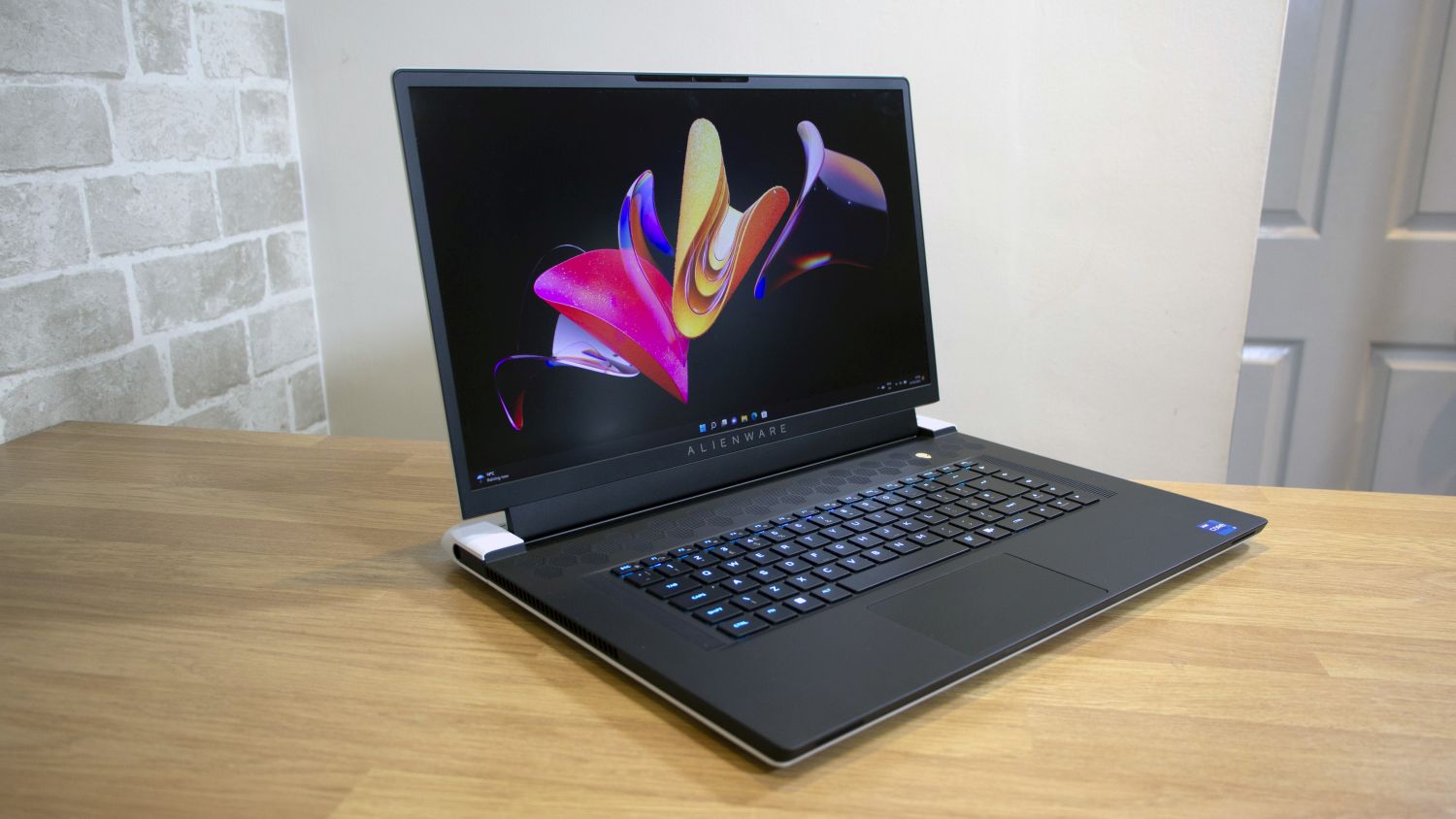
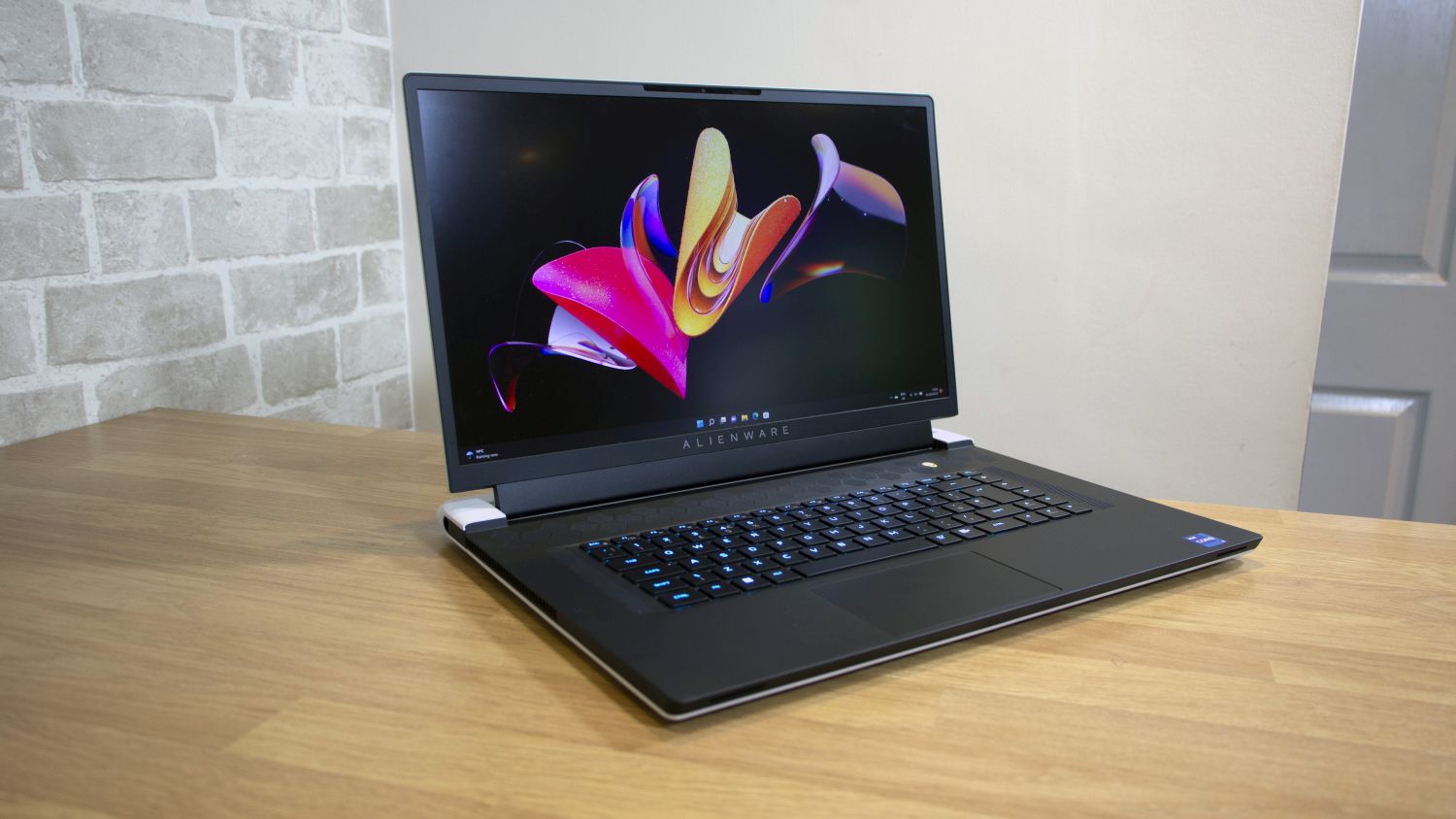
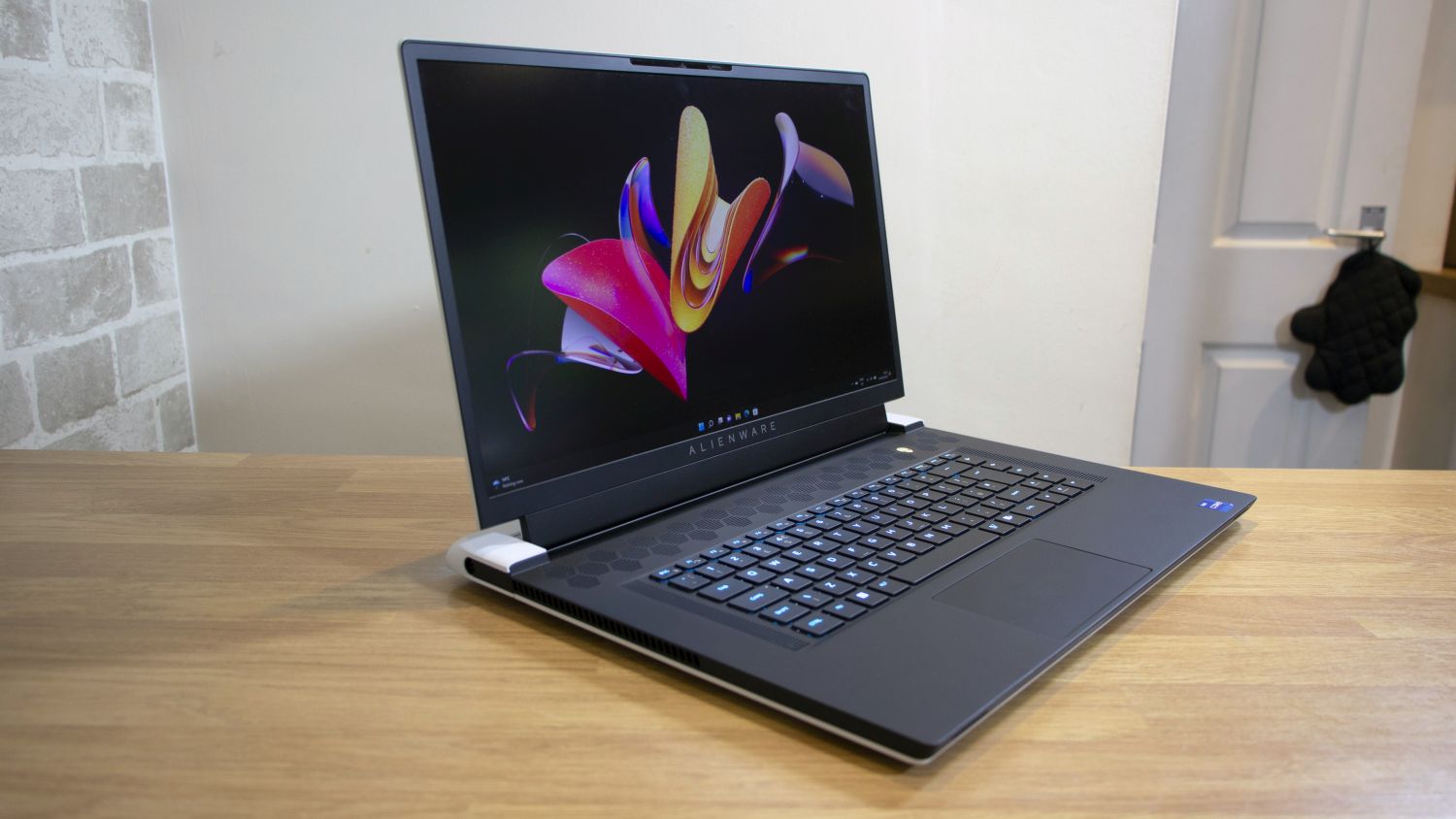
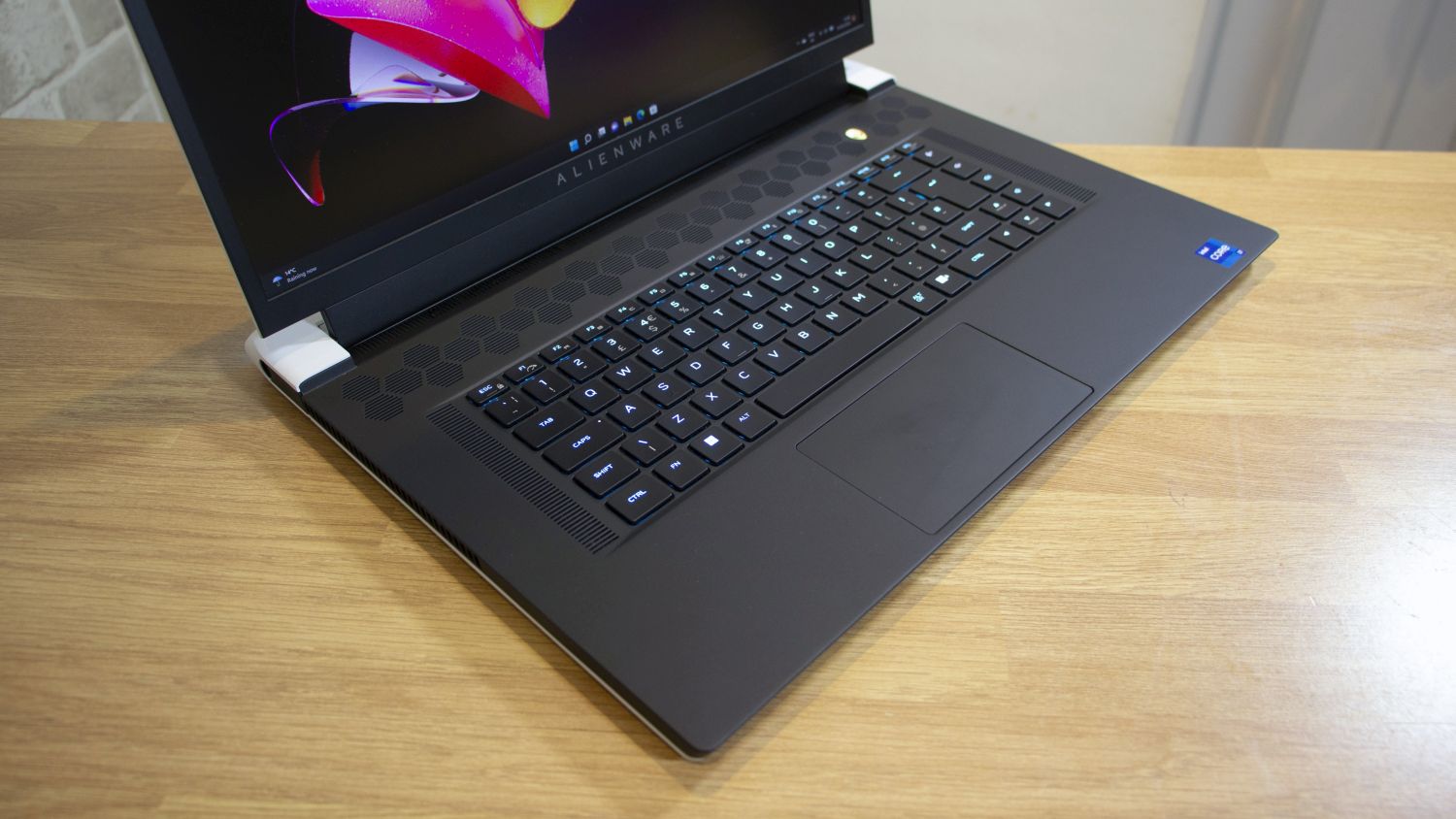
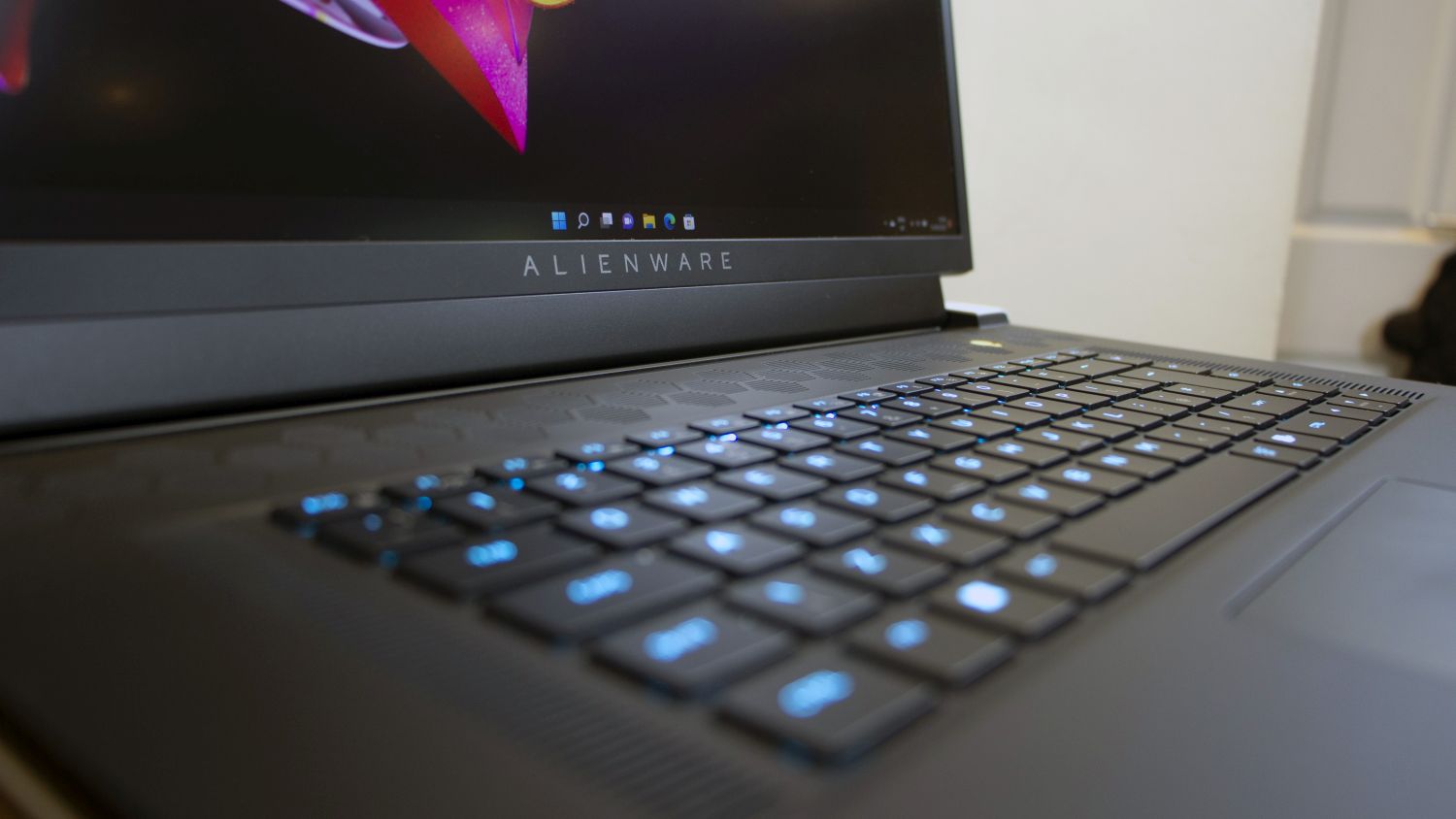
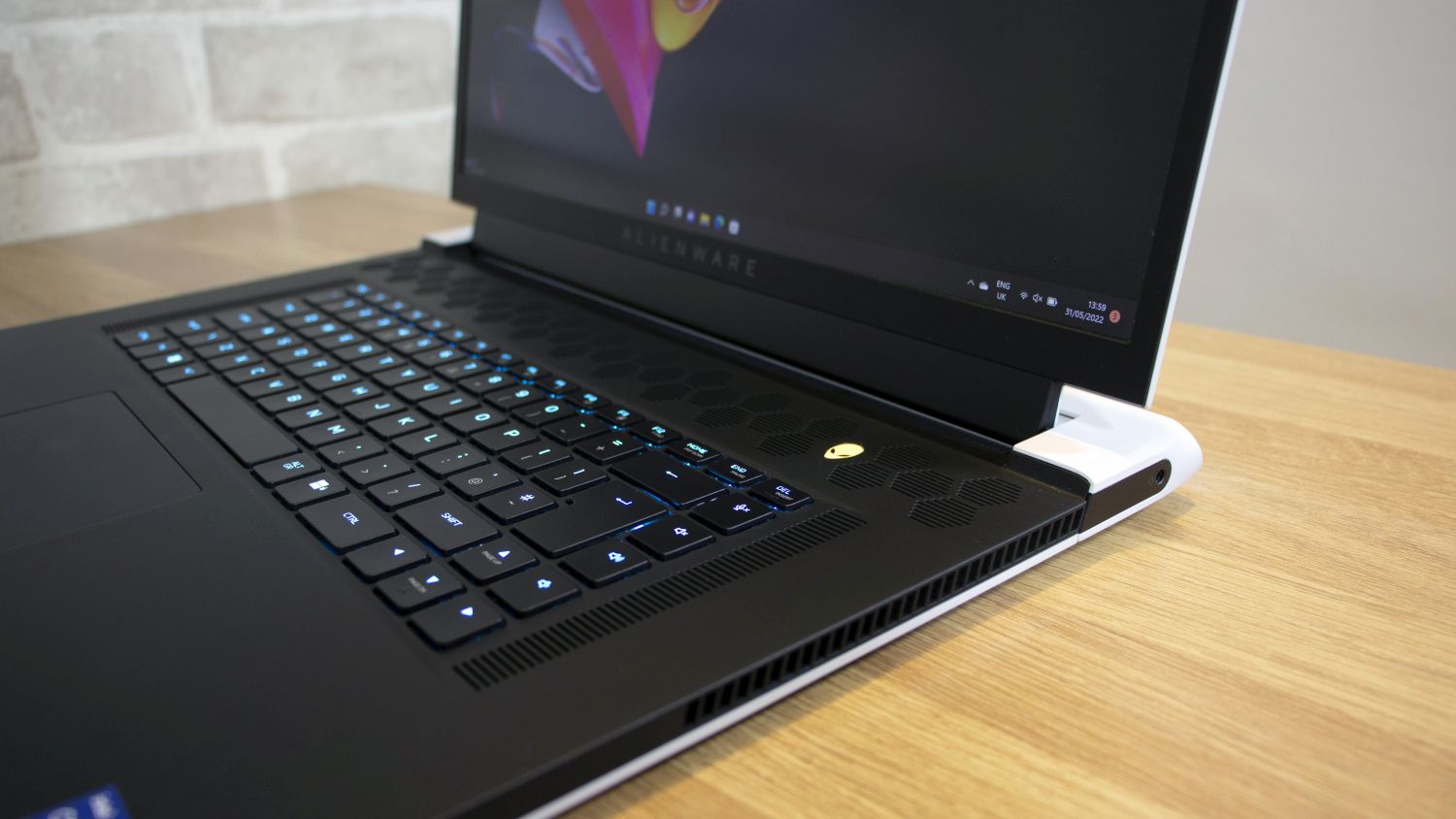
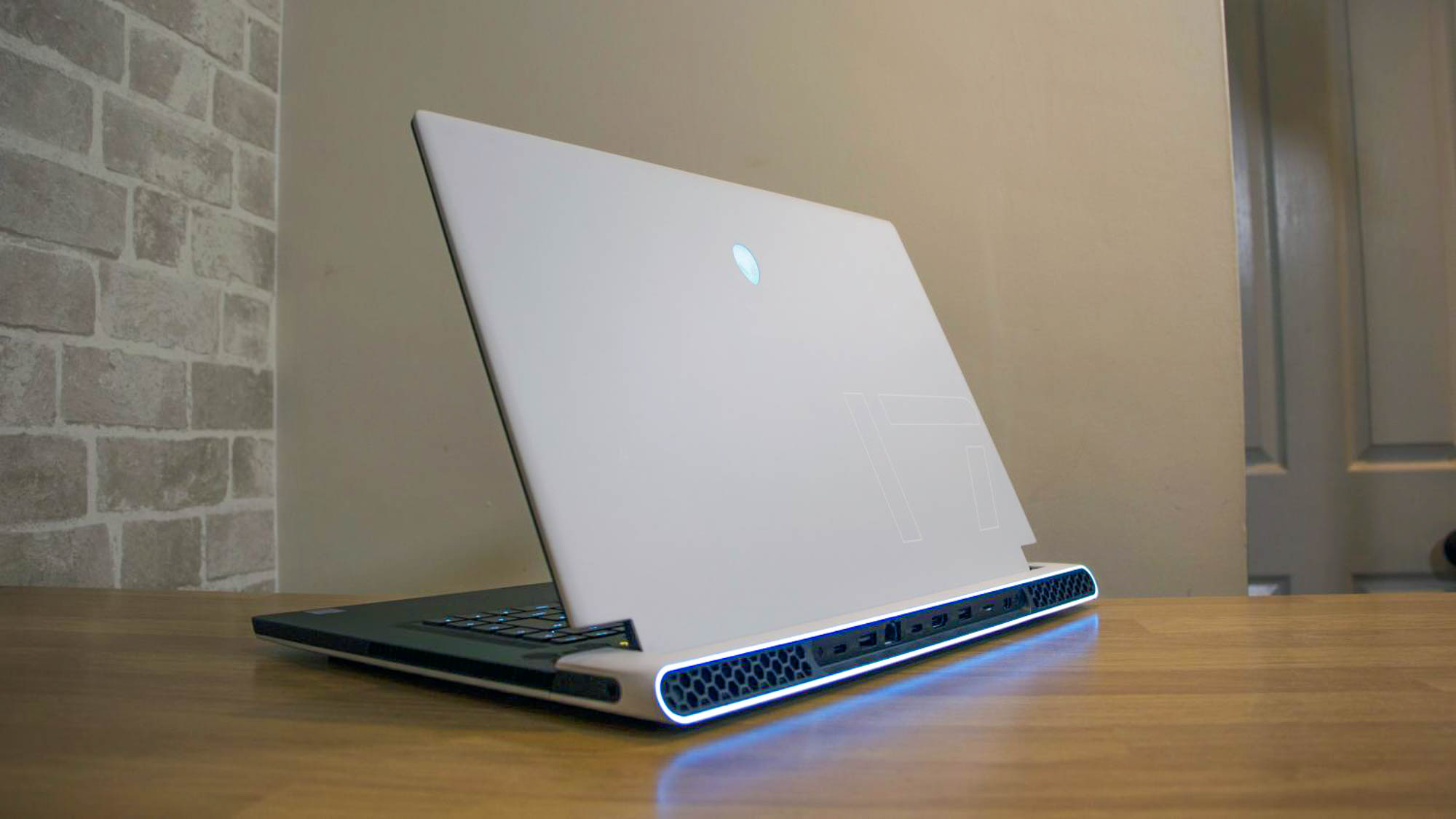
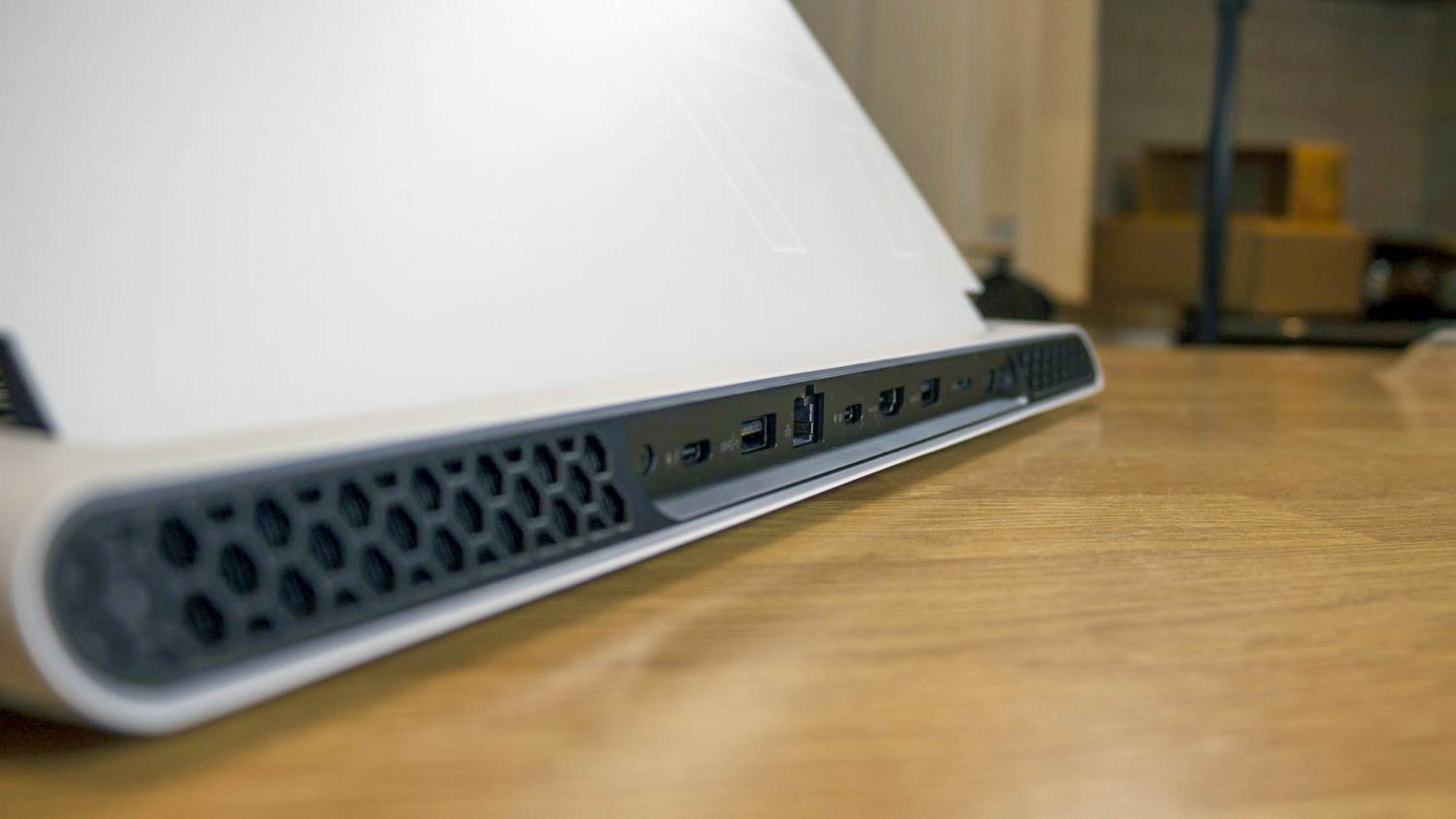
The Alienware x17 R2 might be a gaming laptop, but the vast performance levels and impressive build quality of these notebooks means they shouldn’t be overlooked as potential work devices. This machine, for instance, deploys a beefy Intel 12th Gen processor alongside one of Nvidia’s most powerful laptop graphics cores, and it’s got an immersive 17.3in screen to go with it.
Gaming laptops aren’t cheap, though, and the Alienware is no exception. This model costs £2,624 exc VAT, and the entry-level variant still costs £1,791 exc VAT. When conventional big-screen notebooks are cheaper, can the x17 possibly justify the outlay?
Alienware x17 R2 review: Design
Part of that budget inevitably goes towards eye-catching aesthetic design and, true to form, Alienware’s largest laptop looks bolder than most business machines. The exterior mixes black and white aluminium, and it’s covered with honeycomb air vents. You can deactivate the x17’s bevy of RGB LEDs, but this laptop will always attract attention.
The 21mm-thick body is certainly more eye-catching than the sleek Dell XPS 17 and the dark Asus ProArt Studiobook Pro 16 OLED, and its 3kg heft means that it’s significantly heavier too. Build quality is impeccable, but this machine will definitely weigh you down.
Alienware x17 R2 review: Keyboard and trackpad
The robust chassis does provide space for an excellent keyboard, however. The keys have 1.5mm of travel, and they’re fast, crisp and snappy – the movement is satisfying and not far removed from the best mobile mechanical keyboards. For all-day typing, the x17 fits the bill.
The x17’s keyboard has extra media keys but, like the XPS 17, this machine omits the numberpad. The Asus ProArt machine has shallower keys, but it does have a numberpad and a customizable dial that adds functionality to Adobe’s creative tools and Windows.

The trackpad is another area where the x17’s gaming focus shows through; most gamining machines are typically used in combination with USB mice alongside their laptops, so the x17 has a smaller trackpad than most work notebooks. Its responsive surface and pair of buttons are fine for everyday workloads, but both rivals have bigger pads and the Asus has three buttons.
Alienware x17 R2 review: Display
Above the keyboard you’ll find an IPS display with a 1,920 x 1,080 resolution. That’s fine for everyday workloads and most creative tasks, although you’ll need a higher resolution if you’re planning to spread windows around or see fine detail.
Quality levels are good, though. The contrast ratio of 1,153:1 delivers solid depth and detail, and the peak brightness level of 386cd/m2 is high enough to handle most indoor and outdoor situations. The Delta E of 1.78 means colours are accurate, and the Alienware’s panel rendered 98.1% of the sRGB colour gamut.
It’s a great mainstream screen and it can tackle photo-editing and other content-creation tasks that require sRGB gamut coverage, but it struggles beyond those scenarios. It didn’t render more than 80% of the Adobe RGB and DCI-P3 colour gamuts, so it doesn’t have the ability to handle colour-sensitive design work in Adobe Creative Suite tools and it can’t properly produce or run HDR content. And while it’s got a stonking 360Hz refresh rate, that’s of little use beyond playing the latest games.
The Alienware’s competitors are better in this regard. The Asus has a 3,840 x 2,400 resolution and a 16:10 aspect ratio, and it covered the entire DCI-P3 and sRGB colour gamuts with more accuracy and a better brightness level. The XPS 17 we reviewed uses the same 4K-busting resolution and it also has better gamut coverage and a huge 444cd/m2 brightness level.
It’s possible to upgrade the Alienware’s display to a 4K model for an extra £541 exc VAT, but that’s a significant price for a screen that adds more pixels but no extra gamut ability.

Alienware x17 R2 review: Hardware and performance
As you’d expect from a high-end gaming machine, the specs here are certainly impressive. This x17 pairs an Intel Core i7-12700H processor with an Nvidia GeForce RTX 3080 Ti graphics core, and that powerful hardware sits alongside 32GB of DDR5 memory and a 1TB SSD. The processor has six Hyper-Threaded P-cores, which rattle through tough workloads, alongside eight E-cores designed for easier tasks. The graphics core has 16GB of dedicated memory and 7,424 stream processors.
Unsurprisingly, the x17 blitzed our benchmarks. Its overall result of 437 is twice as good as the XPS 17 and even further ahead of the Asus. Its video-editing and multi-tasking scores of 437 and 508 are impressive too, and in Cinebench R20 the Alienware scored 6,157, while neither rival could get beyond 4,800 points. Those machine have similar processors, but their slimmer, quieter designs restrict performance, and the only way you’ll get more content-creation power is by moving to a desktop.
In Geekbench’s single- and multi-core tests the x17 scored 1,686 and 12,040, with the former score a little behind Apple’s M1 chip but the latter result nearly 2,000 points ahead. You won’t notice the slight single-threaded discrepancy in everyday use, but the big gulf in the multi-core test gives the Alienware a noticeable lead. The SSD helps, too: its excellent read and write speeds of 6,318MB/sec and 4,155MB/sec mean booting, loading and launching is always fast.
SPECviewperf 2020 tests illustrate the Alienware’s content-creation abilities. Its 3dsmax-07 result of 138.71 is almost twice as good as the Asus and further beyond the XPS, and its 410.61 score in Maya-06 maintains the gap. The x17 scored 265.54 in SolidWorks, which is nearly 100 points beyond the Asus. That’s no surprise when the x17 has an RTX 3080 Ti and its rivals top out with the RTX 3070 and RTX 3060, but it does mean you’ll have loads of power for 3D modelling, product design and animation.
The Alienware retained its lead in the Catia-06 and SNX-04 tests with scores of 75.82 and 22.8, but they’re less impressive and it’s entirely normal for consumer GPUs to struggle with these engineering tools.
There are some trade-offs to get this level of grunt, though. You’ll certainly hear fan noise from the x17 if you push the components in tough work environments, and this is not the notebook to buy if you want a quiet environment – the Asus and Dell are far better.

That said, the fan noise is never overwhelming, and the x17’s size means it’s quieter than most smaller gaming notebooks. And while the exterior does get warm during intensive workloads, only the area above the keyboard becomes uncomfortably hot – and you won’t be touching that part of the laptop.
Alienware x17 R2 review: Battery life
Gaming laptops usually struggle in battery tests, too, and that’s true of the x17. In our 170cd/m2 video benchmark the x17 lasted for 4hrs 17mins, which isn’t even half the lifespan of the XPS 17 and a couple of hours behind the Asus.
If you really push the hardware, especially the graphics core, you’ll only get an hour of longevity from this laptop. And if you occupy the middle ground with an everyday work test, expect just over two hours of use. None of this is a surprise, but it does mean that the x17 is not suitable if you want a long-lasting laptop.
Alienware x17 R2 review: Ports and features
You’ll find the x17’s ports at the laptop’s rear. The Alienware has a Thunderbolt 4 socket, a USB 3.2 Gen 2 Type-C port with power delivery, and two full-size USB 3.2 Gen 1 connectors. Display outputs come from HDMI 2.1 and mini-DisplayPort, and the x17 also includes a microSD card slot.
That’s good connectivity, but a ring of RGB LEDs around the rear make the sockets nearly impossible to see from many angles – we’d recommend turning those off. And while rear-facing ports keep cables and dongles tidy, they’re not as accessible as side-mounted sockets.
Above the display there’s a 720p webcam that supports Windows Hello, and on the inside there’s dual-band Wi-Fi 6 and Gigabit Ethernet. The x17 has no Kensington lock slot, but does boast a TPM 2.0 module, and the laptop’s base can even be removed for access to pairs of SO-DIMM and NVMe SSD slots.

That’s enough connectivity for gamers, but the x17 also misses other features. That webcam doesn’t have a privacy shutter, there’s no fingerprint reader, and the speakers have loads of volume and bass but a tinny top-end. A full-size SD card slot would be more useful for creatives.
Dell’s XPS machine competes with four Thunderbolt 4 sockets and an SD card reader, but it only has one full-size USB port. The Asus is better than both: it mirrors the x17’s USB selection and adds an SD card slot, its webcam has a privacy shutter, and it has a fingerprint reader and Kensington lock slot.
Alienware x17 R2 review: Verdict
Some of those missing features are no surprise when you consider that the x17 isn’t a work notebook, but its sheer performance levels mean it’s still worthwhile if you need productivity power. And, alongside the muscular internals, it’s got plenty of ports, a great keyboard and a rock-solid exterior.
There are inevitable downsides, though. The x17 is significantly heavier than both rivals, and they have better battery life and screens. The Asus offers its innovative Dial and better connectivity for £1,666 exc VAT, while the XPS 17 costs £2,332 exc VAT for a specification that approximately matches the x17.
That said, the Alienware x17 R2 is worth the extra outlay if you want extreme performance inside a sturdy, port-packed laptop – just remember that you may get more looks than usual in the office.
Alienware x17 R2 Specifications
| Processor | 2.3GHz quad-core Intel Core i7-12700H |
| RAM | 32GB DDR5 |
| Graphics | Nvidia GeForce RTX 3080 Ti 16GB |
| Storage | 1TB SSD |
| Display | 17.3in 1,920 x 1,280 IPS |
| Operating system | Windows 11 Home 64-bit |
| Connectivity | Gigabit Ethernet, Dual-band 802.11ax WiFi, Bluetooth 5.2 |
| Ports | 1 x Thunderbolt 4, 1 x USB 3.2 Gen 2 Type-C/Power delivery/DisplayPort, 2 x USB 3.2 Gen 1, 1 x HDMI, 1 x mini-DisplayPort, 1 x microSD, 1 x audio |
| Dimensions | 399 x 300 x 21mm (WxDxH) |
| Weight | 3kg |
| Warranty | 1yr RTB |
Get the ITPro daily newsletter
Sign up today and you will receive a free copy of our Future Focus 2025 report - the leading guidance on AI, cybersecurity and other IT challenges as per 700+ senior executives
Mike Jennings has worked as a technology journalist for more than a decade and has been fascinated by computers since childhood, when he spent far too long building terrible websites. He loves desktop PCs, components, laptops and anything to do with the latest hardware.
Mike worked as a staff writer at PC Pro magazine in London for seven years, and during that time wrote for a variety of other tech titles, including Custom PC, Micro Mart and Computer Shopper. Since 2013, he’s been a freelance tech writer, and writes regularly for titles like Wired, TechRadar, Stuff, TechSpot, IT Pro, TrustedReviews and TechAdvisor. He still loves tech and covers everything from the latest business hardware and software to high-end gaming gear, and you’ll find him on plenty of sites writing reviews, features and guides on a vast range of topics.
You can email Mike at mike@mike-jennings.net, or find him on Twitter at @mikejjennings
-
 ‘Phishing kits are a force multiplier': Cheap cyber crime kits can be bought on the dark web for less than $25 – and experts warn it’s lowering the barrier of entry for amateur hackers
‘Phishing kits are a force multiplier': Cheap cyber crime kits can be bought on the dark web for less than $25 – and experts warn it’s lowering the barrier of entry for amateur hackersNews Research from NordVPN shows phishing kits are now widely available on the dark web and via messaging apps like Telegram, and are often selling for less than $25.
By Emma Woollacott Published
-
 Redis unveils new tools for developers working on AI applications
Redis unveils new tools for developers working on AI applicationsNews Redis has announced new tools aimed at making it easier for AI developers to build applications and optimize large language model (LLM) outputs.
By Ross Kelly Published
-
 Google layoffs continue with "hundreds" cut from Chrome, Android, and Pixel teams
Google layoffs continue with "hundreds" cut from Chrome, Android, and Pixel teamsNews The tech giant's efficiency drive enters a third year with devices teams the latest target
By Bobby Hellard Published